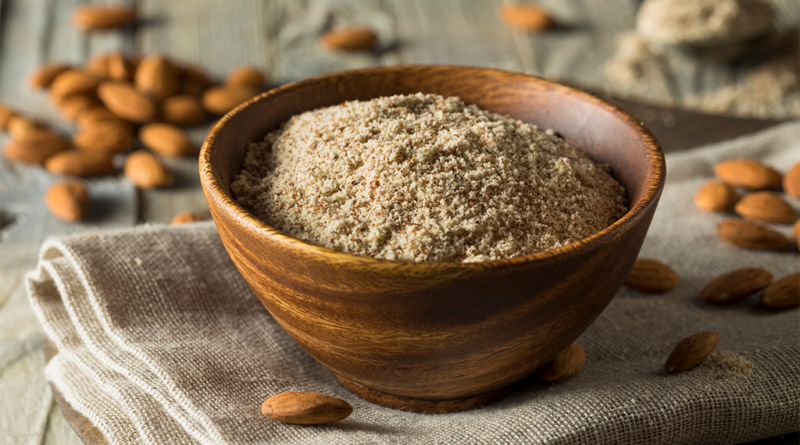7 reasons to add almond flour to your diet and how to use it
Almond flour is an alternative to those traditional flours — such as wheat flour.
This food comes from the grinding of the well-known almond, an oleaginous plant with a high nutritional content and a predominance of unsaturated fats. Its flour is produced after removing the oily content of the seed.
Want to know more about the benefits of this food and how to fit it into your diet?
Check it out below!
What is Almond Flour?
Resulting from almond processing, this flour has a high fat content for a low carbohydrate content , in addition to different minerals than common wheat flour.
Within a low-carb diet — that is, with carbohydrate restriction or without the presence of gluten — almond flour acts as an interesting replacement for several recipes.
In terms of nutritional values, in 15g (one tablespoon), almond flour provides around 90 to 95 kcal, in addition to higher percentages of fat and protein, with approximately 10% of fiber and micronutrients (vitamins and minerals), such as Magnesium, Calcium and many others!
Almond flour benefits
Its benefits are diverse. Check out the main ones below:
low carb
Having less carbohydrates is not, in itself, a benefit, as it depends a lot on the user and the structure of their diet. But almond flour has a restricted carbohydrate composition , because it is derived from an oilseed, in which the predominant content is fat.
low glycemic index
Because it is a flour in which the presence of macronutrients , such as proteins and fats (in addition to the percentage of fibers), is high, the speed with which the carbohydrate reaches the bloodstream is lower.
Therefore, when mixed with other culinary preparations, almond flour is able to delay the glycemic index of the meal.
Helps in cholesterol control
Its fats are predominantly unsaturated, which helps promote a better blood lipid profile , that is, it raises HDL-c levels (the so-called “good cholesterol”) and helps to minimize LDL-c levels (the famous “bad cholesterol”).
In addition, the presence of its fibers helps to reduce the absorption of cholesterol in the intestine, as they are of the “soluble” type, thus forming a gel that inhibits the entry of cholesterol into the blood.
excellent source of energy
Due to its amount of calories and distribution of nutrients , almond flour becomes a great source of energy for those who need a higher caloric quota for the day — such as people in the muscle building phase or large individuals (mostly part of the cases).
Almond flour has antioxidant and anti-inflammatory properties
Almonds are a great source of antioxidants — in this case, vitamin E and bioactive compounds — acting, indirectly or not, on the body’s anti-inflammatory action .
This is because it promotes greater protection against oxidizing agents, formed by free radicals that occur during the production of oxygen-based energy.
Good option for celiacs
Because they do not have gluten in their diets, celiacs lose basic components of the Pakis diet, which are great energy sources, in addition to essential micronutrients for the body.
With almond flour, these same individuals are able to ingest a greater amount of calories and more nutrients , in small portions of food, varying in relation to the casual routine.
Helps in the weight loss process
By helping to promote satiety , it helps in the weight loss process, since this type of sensation is extremely important to enable the lowest volume of calories during the weight reduction period.
In addition, it enriches the micronutrients of the food plan.
How to produce and consume?
Simple! To produce almond flour, simply:
- pick up the oilseed itself;
- boil it to remove its skin;
- pass it through the grinder, targeting the low-carb farinaceous.
Once this is done, its application in the kitchen is very wide, ranging from biscuits, smoothies, cupcakes, cakes, pancakes and salads, or even to bread meat, fish and chicken.
Therefore, almond flour has a wealth of properties and uses in people’s daily diet.
For more interesting articles visit our blog.

